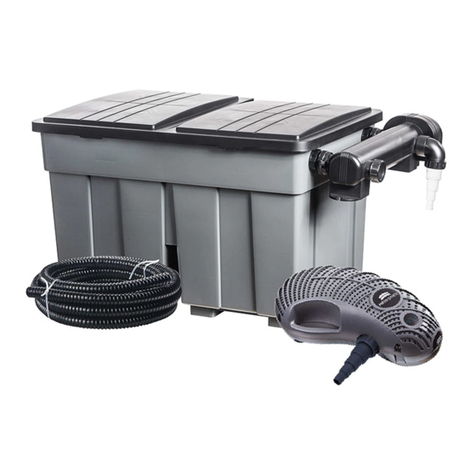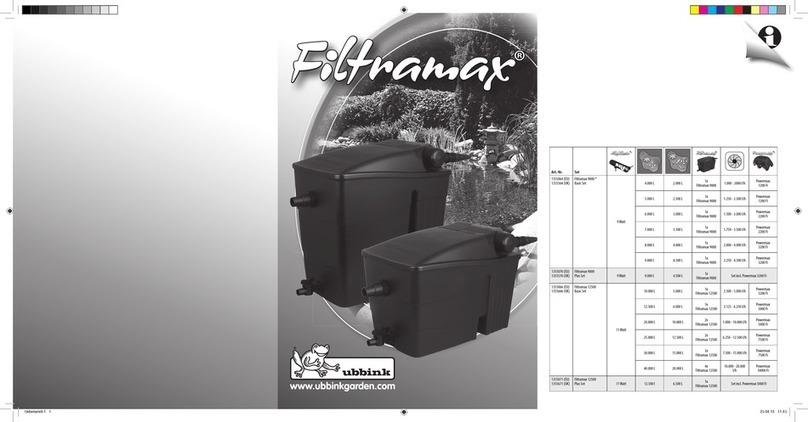
5Trident Audio Developments | Hi-Lo Dynamic Filtering User Manual 6Trident Audio Developments | Hi-Lo Dynamic Filtering User Manual
Lo-Cut Dynamic Tracking continued
Further possibilities — The sweep range of the Lo-Cut filter is extremely
wide, from eectively ultrasonic to right down to full audio bandwidth.
This suggests the possibility of fading tracks in and out, not in the ampli-
tude domain as usual, but in the frequency domain.
Hi-Lo Peak Indicators
The Trident Hi-Lo includes LED peak indicators on the outputs of both
the Hi-Cut filter section and the Lo-Cut filter section. Since the filters are
in series (the Hi-Cut circuitry before the Lo-Cut), the Hi-Cut Peak LED
monitors the Hi-Cut filter stage only, and the Lo-Cut Peak LED monitors
signal thru both stages, and as such, the output of the unit. This gives the
most flexibility for clip monitoring in the unit. The Output of the Hi-Lo
can drive approximately 27.5 dB into a 600 Ohm load. The clip levels are
approximately 12 dB below actual signal Clip (so we have this occur at
+16dBu) and allows for tweaks in resonance which may exceed that but
allow for headroom after the clip indicator has just reached active.
It should also be noted, that if neither the Hi-Cut or Lo-Cut switches are
enabled, the peak LED indicators are actively monitoring the incoming
signal level.
Dynamic Linking Linked Stereo Tracking
The Trident Hi-Lo module also oers the option of linked stereo tracking
when paired with a second Trident Hi-Lo module. Ordinarily, most 500
Series racks oer paired slots by default. The Trident Hi-Lo provides an
on-board stereo link switch (S9) for use in this instance. With both mod-
ules stereo link switches selected to on, and the modules fitted in the pre
paired slots, the modules are now paired together.
By enabling both Hi-Lo modules TRACK SIGNAL switches, and setting
the FREQUENCY controls to identical positions, the left and right signals
are now summed together, and the automatic tracking follows both the
left and right signal sources.
When using a 500 Series rack with selectable stereo pairing on the rear
of the rack, such as with the Trident Deca-Dent, by releasing the on-board
stereo link switches, both modules can be used as separate mono units
without the need to access the rear of the rack.
API Radial Workhorse
An on-board jumper is available for use when the Trident Hi-Lo is used in
conjunction with the API Radial Workhorse. When selected, this allows the
Hi-Lo to send its output to the Workhorse mix bus (pin 11), which is fed to
the Workhorse mixer section. This can be used in conjunction with the on-
board stereo link switch, thus enabling stereo use on the Workhorse.
— SPECIFICATIONS —
Input Impedance 10 kilohms
Max Input +27dBu
Max Output +27dbu (Into 600ohms)
Distortion (+10dBu Out) 0.0031% (20Hz to 20kHz)
(Hi Enabled Max Freq)
(Lo Enabled Min Freq)
Distortion (+20dBu Out) 0.0069% (20Hz to 20kHz)
Frequency Response 15Hz to 60kHz (-3dB)
Noise (20Hz to 20kHz bandwidth limited)
No Filters in circuit (Residual Noise) -95dBu
High Cut Enabled
Freq Max -83.5dBu
Freq Min -90dBu
Freq Max – 24dB/Oct Slope Enabled -80dBu
Freq Min – 24dB/Oct Slope Enabled -90dBu
Freq Max – Res Enabled, Resonance Min -83.5dBu
Freq Max – Res Enabled, Resonance Max -72dBu
Freq Max – 24dB, Res Enabled, Res Max -71dBu
Freq Min – Res Enabled, Resonance Min -90dBu
Freq Min – Res Enabled, Resonance Max -90dBu
Freq Min – 24dB, Res Enabled, Res Max -90dBu
Low Cut Enabled
Freq Max -83dBu
Freq Min -86dBu
Freq Max – 24dB/Oct Slope Enabled -83dBu
Freq Min – 24dB/Oct Slope Enabled -90dBu
Freq Max – Res Enabled, Resonance Min -84dBu
Freq Max – Res Enabled, Resonance Max -72dBu
Freq Max – 24dB, Res Enabled, Res Max -73dBu
Freq Min – Res Enabled, Resonance Min -86dBu
Freq Min – Res Enabled, Resonance Max -87dBu
Freq Min – 24dB, Res Enabled, Res Max -84dBu
Up to 48dB Per Octave Slope (Wired In Series)
When two Hi-Lo modules are connected in series, slopes of 12, 24, 36 and
48dB can be achieved, in any combination, by selecting the appropriate
SLOPE buttons on the front of each Hi-Lo module. For example, by en-
gaging both of the Hi-Lo modules Hi-Cut filters, and setting both mod-
ules to 24dB slope, the program material will be subject to a 48dB slope.
By adjusting one of the Hi-Cut filters to 12dB, the program material will be
subject to a 36dB slope.
The introduction of a third Hi-Lo in series with the first two Hi-Lo mod-
ules, would provide for yet steeper slopes, again in increments of 12dB. If
fact, because they can be connected in series, you’re only limited by the
number of Hi-Lo’s that you have to hand.






















